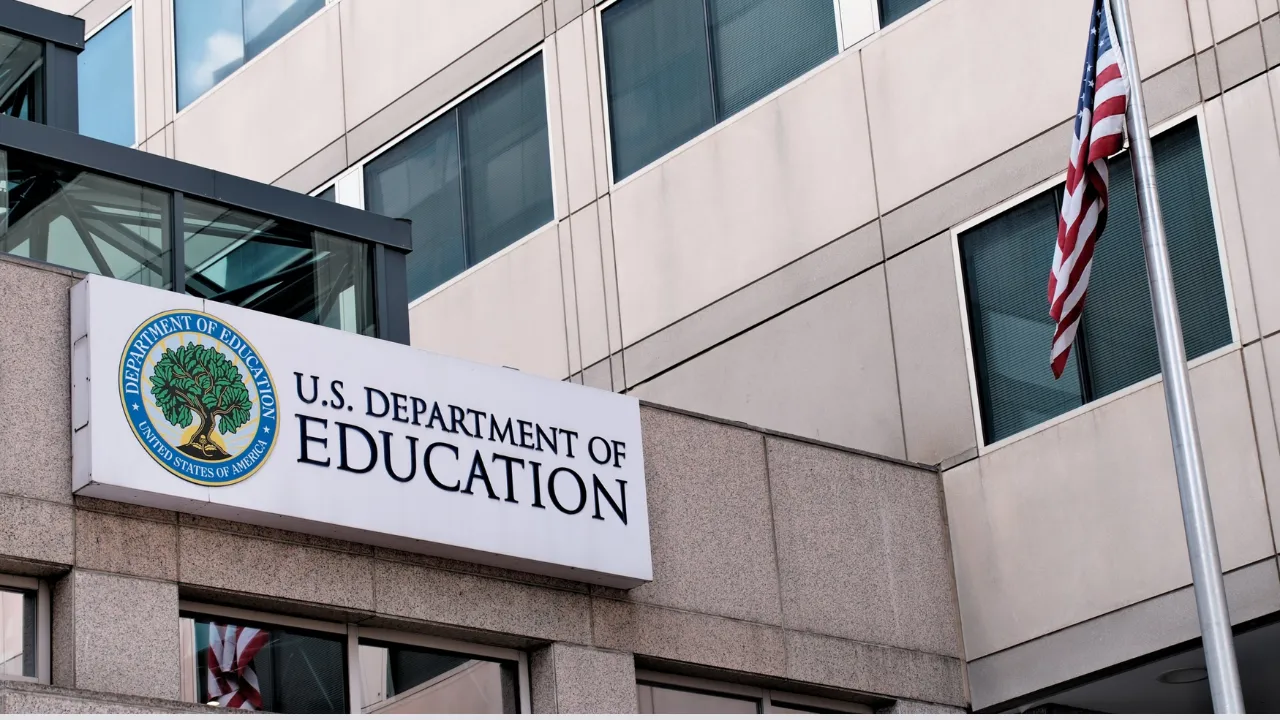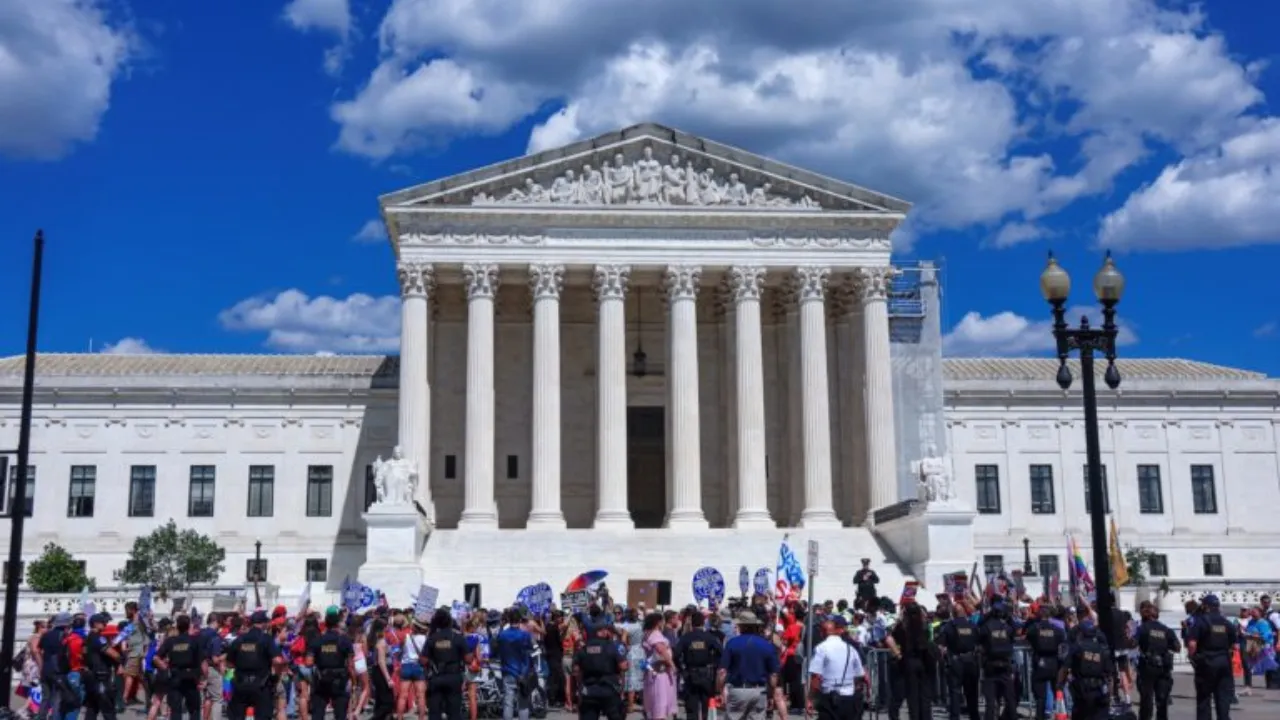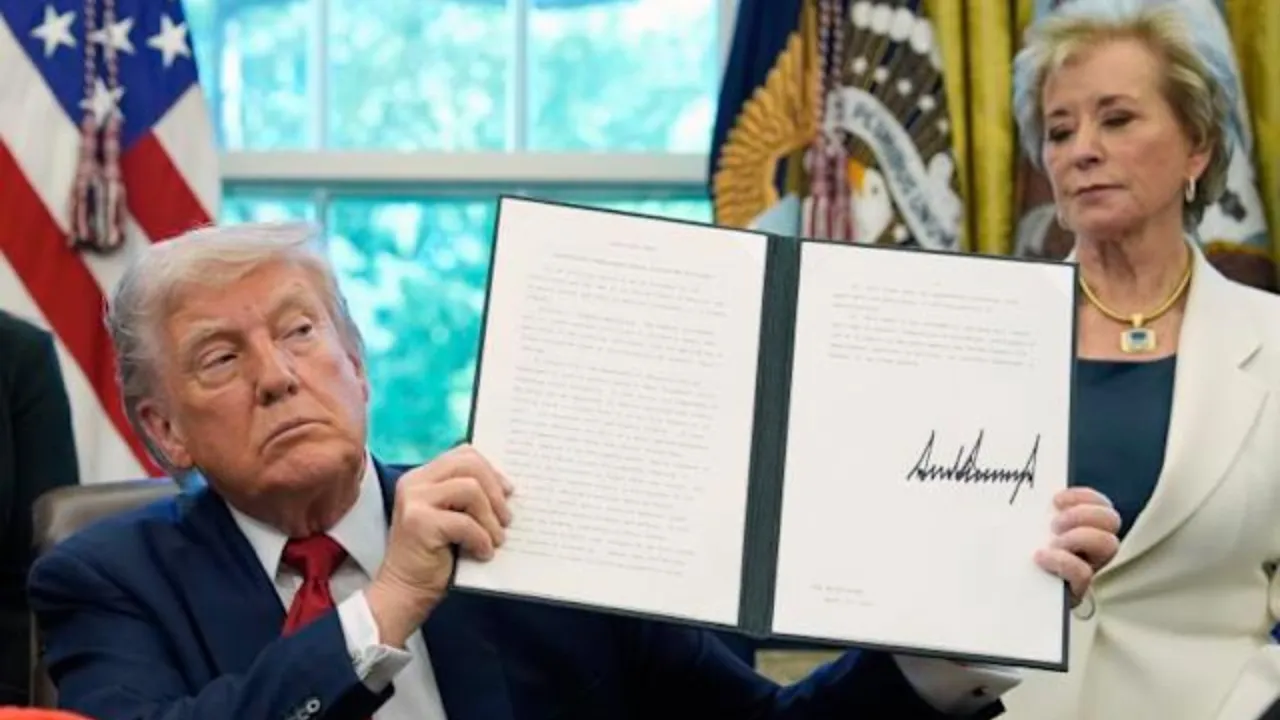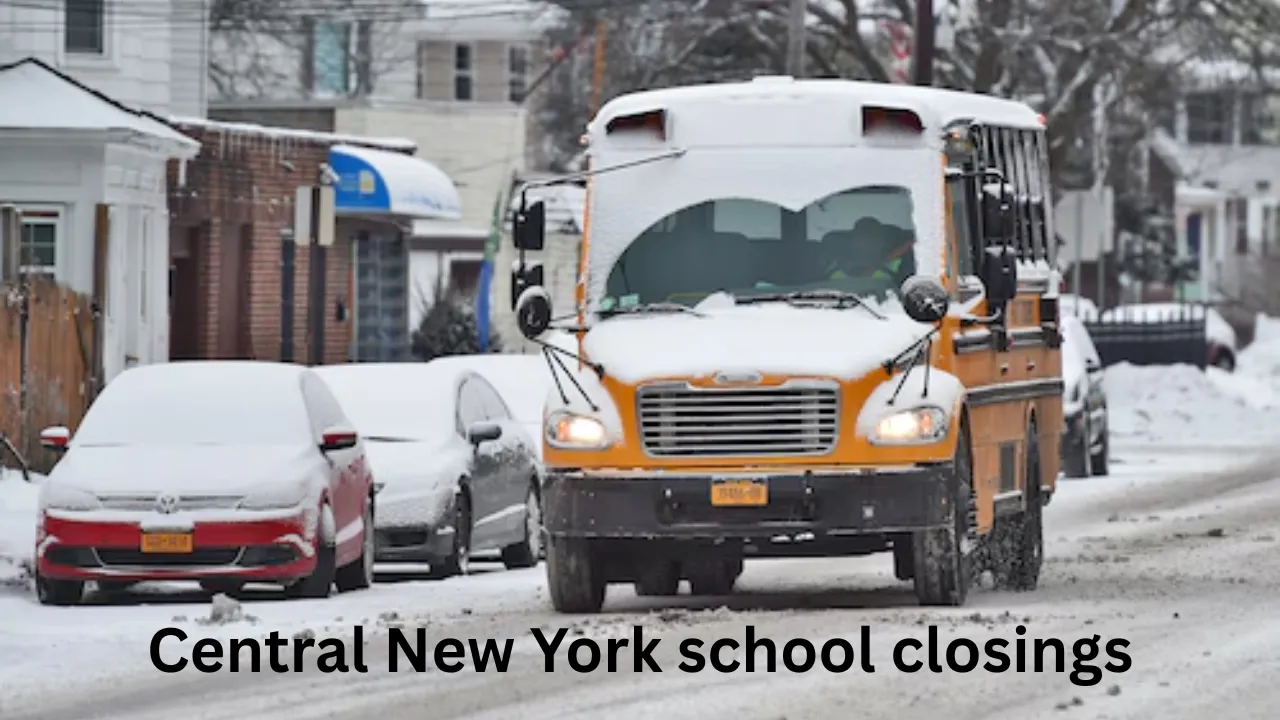Education Department funding freeze 2025: The United States education system is facing significant uncertainty after the Department of Education announced it will delay the release of billions in federal funds earmarked for critical K-12 initiatives. Scheduled to begin disbursing on July 1, 2025, these funds were intended to support teacher training, summer and afterschool programs, and services for migrant and English learner students. However, school districts nationwide are now scrambling to fill funding gaps caused by this unexpected freeze. The hold on these funds has not only disrupted planning for the upcoming academic year but also raised serious concerns about the long-term implications for student support services and staffing.
The Education Department funding freeze 2025 is impacting roughly $5 billion in already-approved federal grants, according to estimates from education advocates. This includes money for professional development, enrichment programs, and compliance with federal education mandates. The move, initiated by the Trump administration, comes as part of a broader review to ensure spending aligns with executive priorities. While officials say the review is temporary, no clear timeline has been provided, leaving states and schools in financial limbo during a critical planning period.
Education Department funding freeze 2025
The Education Department funding freeze 2025 refers to the federal government’s decision to withhold key education funds as of July 1. This unexpected action has left schools without access to grants needed to operate programs for migrant students, develop teachers, and run summer learning centers. The freeze comes despite the funding being previously approved by Congress and signed into law. The delay stems from a spending review led by the Office of Management and Budget (OMB), with speculation that the White House could use rescission tactics to block or reduce the funding permanently. This decision threatens to strain district budgets, jeopardize federally mandated programs, and disrupt staffing plans just weeks before the school year begins.
Overview Table: Education Department Funding Freeze
| Key Details | Information |
| Total Funds Affected | Estimated $5 billion |
| Main Programs Impacted | Teacher training, 21st Century Community Learning Centers, SSAE grants, migrant education |
| Start Date of Freeze | July 1, 2025 |
| Administrative Justification | Spending review and budget alignment |
| Led By | Office of Management and Budget (OMB), Director Russell Vought |
| Targeted States/Territories | At least 33 affected |
| Legal Status of Funds | Approved by Congress, pending disbursement |
| Potential Tactic Used | “Pocket rescission” to block or expire funding |
Programs on Hold
The funding freeze impacts a wide range of federal education programs, many of which directly serve underserved student populations. Key programs affected include:
- 21st Century Community Learning Centers: Provides afterschool and summer learning opportunities for students in low-income areas.
- State Teacher Training Grants: Supports professional development and recruitment initiatives, especially in underserved schools.
- Student Support and Academic Enrichment (SSAE) Grants: Funds programs for mental health services, advanced coursework, and technology access.
- Migrant and English Learner Education: Offers vital resources for students who face educational disruptions due to relocation and language barriers.
These programs represent lifelines for students and teachers alike. Without them, districts risk falling short of federal education standards and failing to support vulnerable student groups.
Uncertainty for Schools and States
States were notified through official communications that the Department of Education would not obligate fiscal year 2025 funds by the expected July 1 deadline. The review timeline remains open-ended, leaving states without a concrete plan for when funds might be released.
This delay is especially problematic as school districts finalize hiring plans and develop programming for the new academic year. In some areas, these federal grants make up more than 10 percent of total K-12 education budgets. Districts are now forced to consider emergency cuts, temporary layoffs, or using reserve funds to avoid gaps in instruction and student services.
Widespread Reaction and Concern
The decision has sparked significant backlash from education organizations, school officials, and state leaders. Carissa Moffat Miller, CEO of the Council of Chief State School Officers, emphasized that “these funds were approved by Congress and signed into law by President Trump in March.” She warned that delays would severely disrupt hiring and program implementation.
Similarly, AASA’s government affairs manager Tara Thomas criticized the move, calling it a shift of responsibility from the federal government to already overburdened school systems. “This creates additional strain on budgets and pushes more unfunded mandates onto schools,” she said.
Education experts argue that the freeze undermines trust in federal support systems and could discourage long-term planning at the local level.
Political Strategy Behind the Freeze
The funding hold appears to be part of a broader effort by the Trump administration to control federal spending through budget rescission. OMB Director Russell Vought has hinted at using a “pocket rescission”—a tactic where funds are withheld long enough to expire at the end of the fiscal year on September 30.
This approach bypasses traditional Congressional processes and allows the administration to effectively cancel funds without formal rejection. Though legal, the tactic is highly controversial and raises concerns about executive overreach, especially when it involves resources critical to public education.
The administration has also proposed eliminating or reducing some of these programs in its broader 2026 budget proposal, suggesting that the current freeze may reflect a longer-term policy direction.
Short- and Long-Term Impact
While school leaders hope the freeze is temporary, the consequences are immediate. Summer programs may be shortened or canceled. Hiring for key teaching roles could be delayed. Support services for English learners and migrant students may be reduced just as school begins.
In the longer term, prolonged uncertainty could erode confidence in federal education support and hamper efforts to recruit teachers, invest in mental health, or implement enrichment programs. It may also spark legal challenges if states argue that the federal government is neglecting its responsibility to uphold education funding laws.
Districts that rely heavily on these grants, especially in lower-income regions, are most at risk of disruption.
FAQs
1. What is the Education Department funding freeze 2025 about?
It refers to the Trump administration’s decision to delay nearly $5 billion in federal education grants, including funding for teacher training and migrant education, as part of a spending review.
2. Are these funds permanently canceled?
Not yet. The funds are being reviewed and may be restored, reduced, or allowed to expire if the administration proceeds with a “pocket rescission.”
3. Which programs are most affected by the freeze?
Programs for teacher development, afterschool learning, student mental health, English learners, and migrant education are among the hardest hit.
4. How are schools responding to the freeze?
Districts are adjusting budgets, postponing staff hires, or cutting programs while awaiting clarification on the status of the funds.
5. What can be done to reverse the freeze?
Congress may intervene through legislation or oversight hearings. Public pressure, legal action, or advocacy by education groups could also influence the outcome.
Final Thought
The Education Department funding freeze 2025 is more than a bureaucratic delay—it’s a direct hit to the heart of America’s public education system. With crucial programs on pause and millions of students left in uncertainty, the move has reignited debates about fiscal policy, executive authority, and the role of federal support in education.
School leaders, teachers, and parents cannot afford to wait passively. Now is the time to act. Reach out to lawmakers, support advocacy organizations, and raise awareness in your communities. Every voice matters when it comes to protecting the educational futures of our children.















